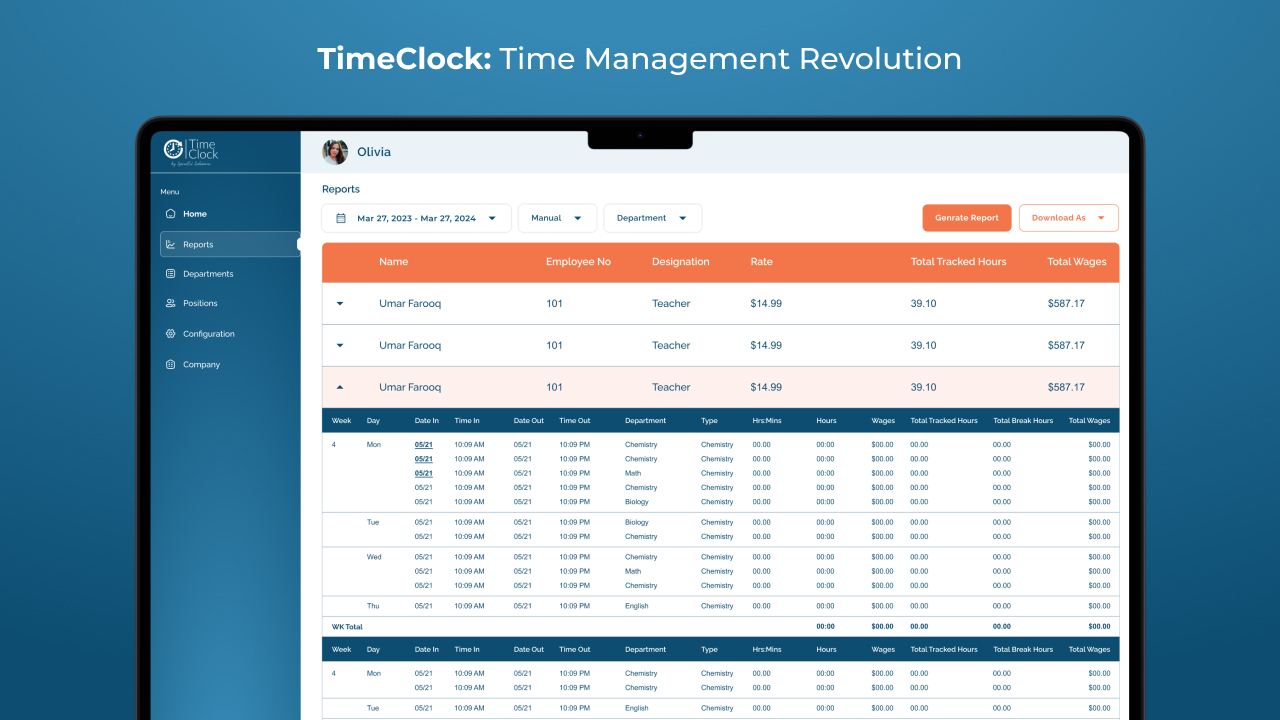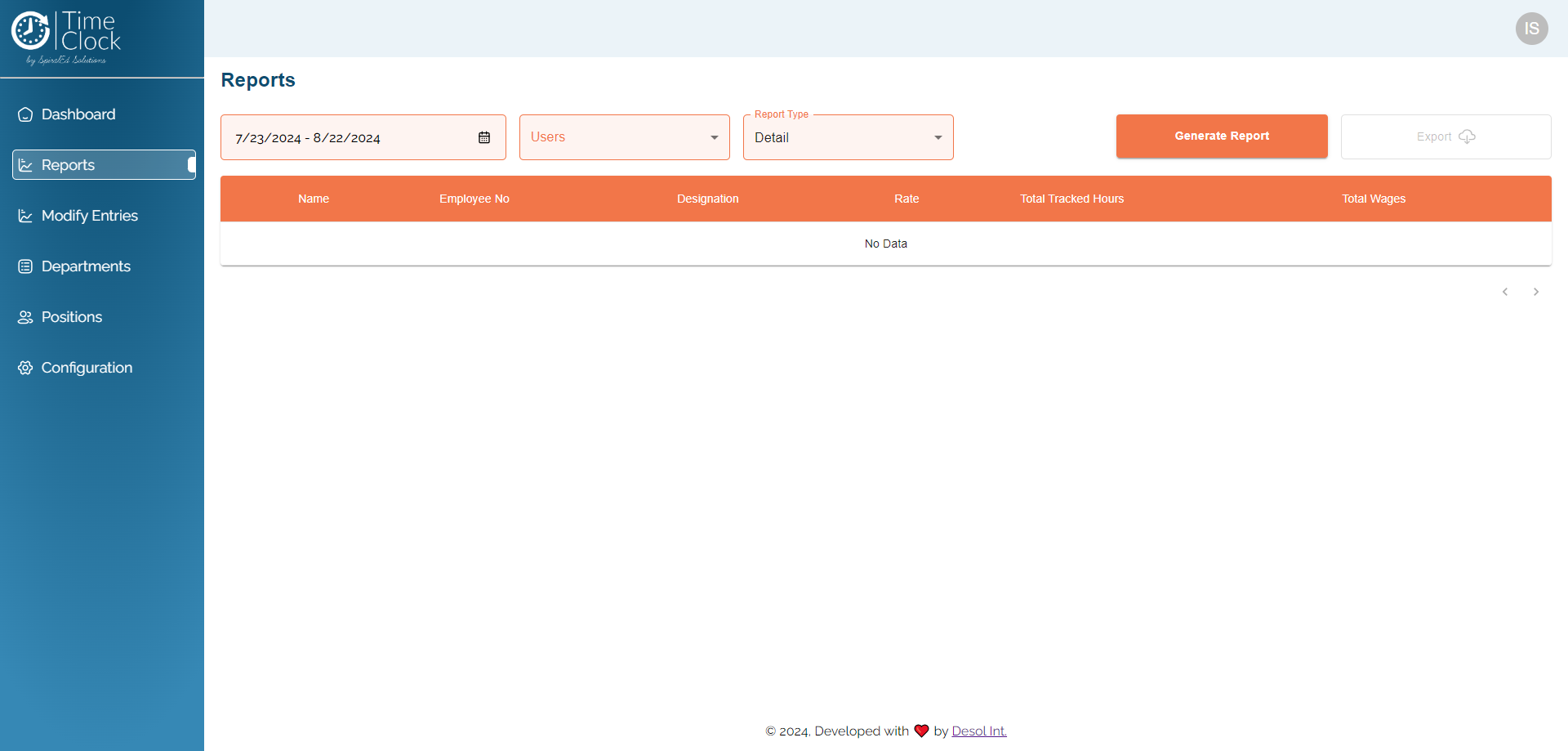Introduction
Our client conducted an extensive analysis of the payroll software market, identifying significant gaps in existing solutions where certain functionalities were either absent or available at prohibitive costs. As a result, the client has proposed the development of a platform aimed at addressing these deficiencies. This platform is designed to offer a comprehensive suite of services as a Software-as-a-Service (SaaS) solution, promising enhanced service quality and a more favorable value proposition for organizations.
Central to the initiative is the streamlining of employee attendance tracking, payroll management, and reporting processes. The project entails implementing a robust system capable of supporting a hierarchical user structure, encompassing super admins, managers, and regular employees. Key features include daily clock-in/out management, break tracking, and configurable attendance modes (strict and flexible) tailored to various operational requirements.

Application Details
The project is structured with several milestones strategically placed to ensure timely completion and efficient management. Each milestone is focused on achieving precise objectives and deliverables, enabling systematic monitoring of progress and ensuring successful completion of crucial stages throughout the development phase.
User Management
An organizational hierarchy that includes a super admin(to have control over the payroll managers) , payroll managers(admin) responsible for interacting with payrolls and employees who are daily operators.
Setting Configurations
Payroll managers can set the configurations of their organizations like how they want their employees to clock the time i.e. Strict Mode & Flexible Mode. In strict mode employees can only clock their time using organization devices and in flexible mode employees can freely mark their attendance from any device. And also enable automated clock-out based on the organizational policies

Clocking Features
The time clock system offers two distinct modes for employees: flexible and strict. In the flexible mode, employees have the option to select their organization, department, and ID as needed. Conversely, the strict mode imposes restrictions where employees are unable to select the organization since the timer is fixed specifically for one organization. The system enables users to log their start and end times, manage break periods, and resume work post-breaks. In cases where a user fails to log out at the end of the workday, the system will autonomously execute the logout process based on predefined configurations specified by the organization.

Dashboard and Reports
Personalized dashboards allow managers and employees to view the attendance reports by filtering the day’s range and also can view detailed or summary reports. Payroll managers can generate, filter, and modify attendance reports as needed.Reports can be exported in XLSX and PDF formats for further analysis.

Technical Implementations
Database Implementation
MongoDB was implemented to handle CRUD operations for managing employees and managers data, including details such as names, positions, and departments. The system effectively managed daily time log data for generating comprehensive reports. Additionally, it sets default cut-off times for each organization within the database, ensuring standardized operational efficiency.
Data consistency
Ensuring that all the recorded attendance data reflects the actual clock-in/out times and breaks taken by employees is without discrepancy and errors. With the use of Express.js and node.js we manage asynchronous operations, middleware logic, error handling, and database integrations to ensure that data remains accurate, reliable, and consistent throughout the application lifecycle.
Performance Optimization
Balancing client and server-side rendering (Next.js) with backend processing (Node.js) to ensure fast page loads and responsive UIs, particularly with large datasets or complex computations.
To manage this, Next.js was optimized for efficient rendering and leveraged Node.js for robust backend operations. This included implementing lazy loading and code splitting, using caching mechanisms, and optimizing database queries to ensure fast page loads and responsive UIs.
Exporting Reports
During the export of reports in various formats, we encountered challenges with handling large datasets. However, we successfully implemented a solution to export data in PDF and XLSX formats, ensuring that users can efficiently utilize the reports.

Conclusion
The development of our timeclock platform was a pivotal achievement in addressing the client’s challenges effectively. By delivering a scalable and efficient solution for time management and payroll processing, we not only met but exceeded their expectations. This platform ensures streamlined operations, allowing the users to manage time effectively across their organization while simplifying the payroll process.
We are dedicated to maintaining this high standard of service through ongoing support and continuous improvements. This commitment includes listening to client feedback, implementing enhancements to meet evolving needs, and ensuring the platform remains robust and reliable. By prioritizing organizational efficiency, we aim to empower our clients with the tools they need to succeed in managing their workforce effectively and driving business growth.









